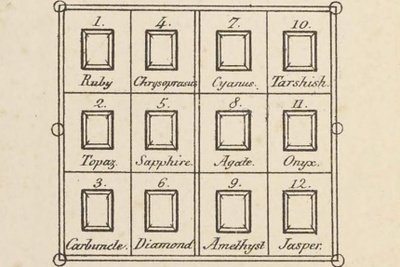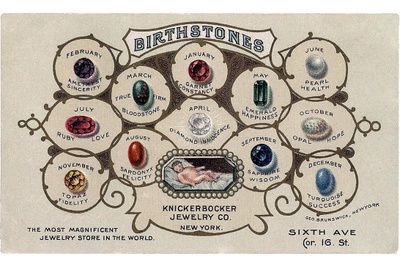Are There Crystals Mentioned in the Bible?
Updated by Sarah Baird
With their light-catching shimmer, spectrum of rich hues, and laundry list of meaningful properties that date back centuries, it’s no wonder that gemstones and crystals appear throughout ancient texts—including the Bible.
Crystals might not be widely used as part of Christian religious services today, but for historical scholars, the role of crystals in the Bible and their modern-day implications is one of deep fascination. Gemologists, theologians, geologists, and clergy have researched and debated the crystals and gemstones of the Bible for centuries, and while many questions remain open-ended, gems and minerals within the Bible deserve more than just a passing glance for those interested in crystals.
The Breastplate of Aaron, High Priest of the Hebrews
One of the most historically important mentions of gemstones in the Bible comes early on in Exodus 39:10-14, when Moses calls for the creation of an elaborate breastplate for Aaron, High Priest of the Hebrews, that contains twelve precious gemstones representing the twelve tribes of Israel.
“And they set in it four rows of stones: a row with a sardius, a topaz, and an emerald was the first row; the second row, a turquoise, a sapphire, and a diamond; the third row, a jacinth, an agate, and an amethyst; the fourth row, a beryl, an onyx, and a jasper. They were enclosed in settings of gold in their mountings. There were twelve stones according to the names of the sons of Israel: according to their names, engraved like a signet, each one with its own name according to the twelve tribes.”
Mineralogist George F. Kuntz writes in his 1913 book,** The Curious Lore of Precious Stones**, that the Jewish historian, Josephus, “must have seen the high-priest wearing his elaborate vestments, [because he] says that the breastplate was adorned ‘with twelve stones of exceptional size and beauty, a decoration not easily to be acquired, on account of its enormous value.’ However, these gems were not merely rare and costly; they also possessed wonderful and miraculous powers.”
Breastplate to Birthstones
You’re certainly not going to be able to find jacinth or sardius when looking for gemstones today—they’re now known as fiery-red carnelian (sardius) and earthy zircon (jacinth)—but these breathtaking crystals in Aaron’s breastplate laid the foundation for our modern concept of lucky birthstones.
As centuries passed, the twelve gemstones became associated with Jesus’ twelve disciples, then the months of the Gregorian calendar, and, finally, corresponding zodiac signs. How to wear the stones for optimal luck or religious honoring differed depending on where the tradition was passed down—some claim individuals wore crystals in reverence of specific apostles, others found that stones were rotated each month for luck—but according to Kurz, by the 16th century in Poland, the practice of wearing a single gemstone to represent one’s birth month attained widespread popularity. Carrying a crystal birth month talisman as a token of good fortune or wearing it as jewelry was widely adopted throughout Europe and the United States, so much so that by 1912 the Jewelers of America standardized the 12 month-by-month birthstones we know today.
The role of twelve gemstones repeats in the final book of the Bible, Revelations 21:18-21, where crystals similar to those described on Aaron’s breastplate build the foundation for the eternal city. “The construction of its wall was of jasper; and the city was pure gold, like clear glass. The foundations of the wall of the city were adorned with all kinds of precious stones: the first foundation was jasper, the second sapphire, the third chalcedony, the fourth emerald, the fifth sardonyx, the sixth sardius, the seventh chrysolite [peridot], the eighth beryl, the ninth topaz, the tenth chrysoprase, the eleventh jacinth, and the twelfth amethyst.”
If you’re interested in finding all mentions of crystals in the Bible, it’ll take time and dedication: there are a whopping 1,704 references throughout its pages, proving that ancient texts and modern interests often have more overlap than we think.
Hoping to learn about crystals beyond your birthstone? Start your journey with a crystal of the month box!










